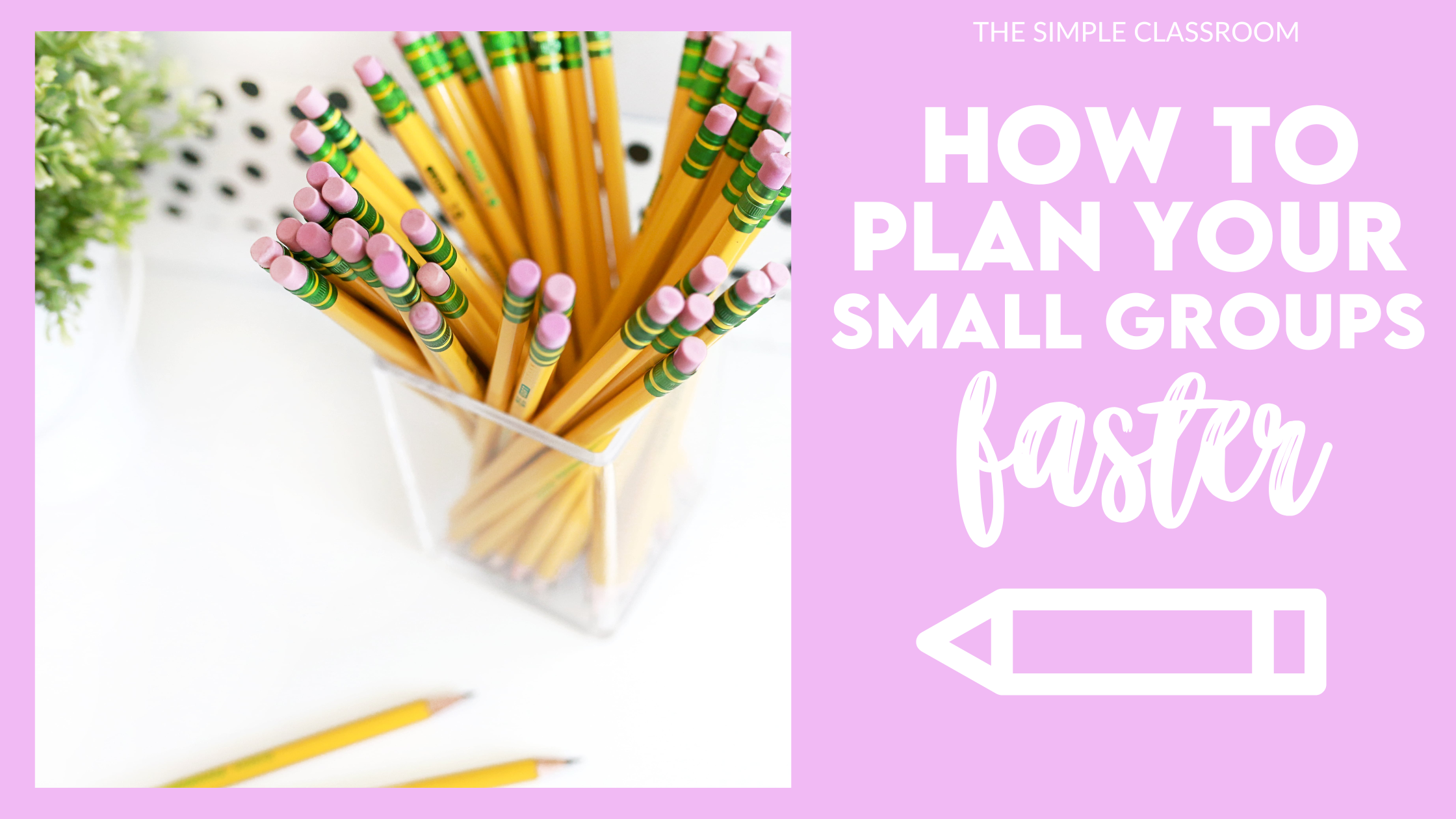Plan your Small Group Lessons FASTER
Small groups used to feel like one more thing to plan for.
If I’m being honest, they still do sometimes.
So, I started using a formula to help me plan them faster than ever. What is that formula?
The Small Group Planning Formula
Name the focus/target.
Choose a warm-up.
Introduce/Model the skill.
Practice together.
Students apply what they learned independently.
The formula helps keep me focused on mapping out those 5 steps of every small group lesson. But, it looks very different from one skill to the next. So, how do you plan lessons for the varying needs of your students? Let’s look at how this formula looks for me as I plan for a variety of groups!
Phonics Groups
Name the Target/Focus: Name the sound(s) you’re going to learn/practice that day.
Warm-Up: Review all previously learned sounds.
Introduce the skill/Model: Introduce the new sound. Say it. Show a variety fo words that teach that sound well. Build and read them to the students, briefly.
Practice together: Students hear, tap, build/write words that include that sounds. Use sound boxes to tap words before writing, etc.
Students work independently: Students read sentences or brief texts that highlight that skill. Students write sentences with words that include that sound.
Fluency Groups
Name the target/focus: Decide which element of fluency you want to work on. (Phrasing, speed, expression, prosody, etc.)
Warm-Up: Give students lists of brief sentences to read to warm up their mouth/brain.
Introduce Skill/Model: Name/define the fluency skill. Model reading with and without that element of fluency. (read like a robot vs. reading with expression.)
Practice together: Choral read the text practicing that skill. Praise the specific things you hear the students doing that mimic your reading.
Independent work: Have students read to you 1 at a time. Take notes of evidence of fluency. Time them to calculate words per minute. Give specific feedback to students and have them re-read sentences that do not mimic the skill you taught.
Comprehension Groups
Name the target/focus: Name the reading skill you are teaching. (main idea, compare/contrast, text evidence, making/revising predictions, etc.)
Warm-Up: Review text that you have been reading; recall what you’ve learned/read so far.
Introduce skill/model: Create a mini anchor chart with your group (or use a whiteboard) to define skill and jot down examples.
Practice together: Read/reread a section of the text and pull out evidence
Independent work: Students read the remainder of the text and finish pulling out evidence of skill.
Come back together whole group to synthesize evidence and make sure students understood the text/where the skill is.
Materials + FREE Reading Passages
Right now, I’m using the materials below to teaching in my small groups! I make all of my plans in my small group planner. Then, I pull the materials I’ll need. I have a state-mandated curriculum for phonics/phonemic awareness. For fluency and comprehension groups, I choose my own materials. So, I use sets of differentiated passages to practice fluent reading and to answer comprehension questions!
Click here to browse all of the reading passages I have authored for grades 1-3!
And, if you want to try a FREE sample of the reading passages I write, sign up below. :)

